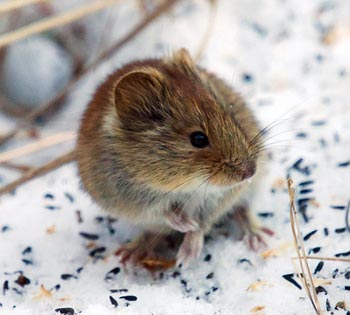Specialist Strategies for Vole Control and Avoidance
Specialist Strategies for Vole Control and Avoidance
Blog Article
Comprehensive Guide to Efficient Vole Bug Control: Invasion Identification and Therapy Approaches
In the realm of efficient insect control, vole invasions pose a special challenge that requires a strategic technique. By exploring the subtleties of vole behavior, recognizing essential indications of problem, and examining a range of control choices, one can develop an extensive approach to deal with these elusive bugs.
Recognizing Vole Behavior
Vole habits is identified by their burrowing habits and fast reproduction rates, making them a difficult insect to regulate successfully. Their rapid reproductive price more makes complex control efforts, with ladies capable of creating multiple litters in a single year, each containing numerous children.
Voles are most active during the morning and evening hours, investing the majority of their time foraging for food. Their burrowing behaviors not only interrupt yards and gardens yet likewise make them testing to eliminate and detect. Comprehending vole actions is vital for effective bug control approaches. By recognizing their burrow locations, monitoring feeding locations, and implementing targeted control approaches, such as trapping or environment modification, vole problems can be managed successfully.
Signs of Vole Infestation

Prevention Approaches
Carrying out efficient prevention strategies is essential in reducing vole infestations and protecting greenery from their damaging feeding practices. To prevent vole problems, it is essential to begin by removing possible food resources and shelter.
On a regular basis examining the residential or commercial property for signs of vole activity, such as runways and delve openings, is crucial for early discovery and prompt action. If vole task is suspected, think about making use of repellents or traps purposefully put near their paths.
Non-Lethal Control Methods
To efficiently handle vole populations while prioritizing humane methods, non-lethal control methods use functional options for minimizing vole damages in landscapes and yards. These obstacles can be hidden at the very least 12 inches curved and deep at a 90-degree angle to stop voles from tunneling below.

Lethal Control Options
One efficient approach for addressing vole problems her comment is here in landscapes and yards involves the strategic use lethal control choices. When confronted with an extreme vole infestation that non-lethal approaches have fallen short to include, executing dangerous control steps becomes essential. One commonly utilized lethal control choice is making use of breeze catches. These catches are designed to swiftly and humanely eliminate voles upon activation, making them a popular selection for many garden enthusiasts and landscaping companies. To enhance the performance of snap catches, it is recommended to put them in areas where vole task is high, such as along paths or near burrow entrances. An additional lethal control choice is the application of harmful lures especially formulated to target voles. These lures contain toxin that is consumed by the voles, resulting in their ultimate demise. Care should be worked out when making use of hazardous lures to stop damage to non-target pets or pets. In general, when employing lethal control options, it is necessary to do so responsibly and according to neighborhood laws to properly manage vole invasions. Get More Information
Verdict
To conclude, efficient vole parasite control needs a comprehensive understanding of vole actions, recognition of signs of problem, application of avoidance methods, and usage of both non-lethal and deadly control techniques. By incorporating these methods, people can successfully manage vole populaces and protect their residential or commercial property from damages. It is necessary to deal with vole problems promptly to stop further problems and lessen the influence on the surrounding atmosphere.
Offered the intricate tunnel systems and rapid recreation prices particular of voles, recognizing the indications of vole problem ends up being essential in efficient bug control. One of the primary indicators of vole visibility is the presence of surface runways or routes in yard or snow, normally about 1-2 inches broad, produced as voles travel between their burrows and food resources.To successfully manage vole populations while prioritizing humane methods, non-lethal control approaches provide functional remedies for reducing vole damages in landscapes and gardens.One reliable approach for addressing vole infestations in gardens and landscapes includes the calculated usage of deadly control choices. vole lawn damage.In verdict, effective click for more info vole pest control requires an extensive understanding of vole behavior, recognition of indications of problem, implementation of prevention techniques, and usage of both non-lethal and deadly control methods
Report this page